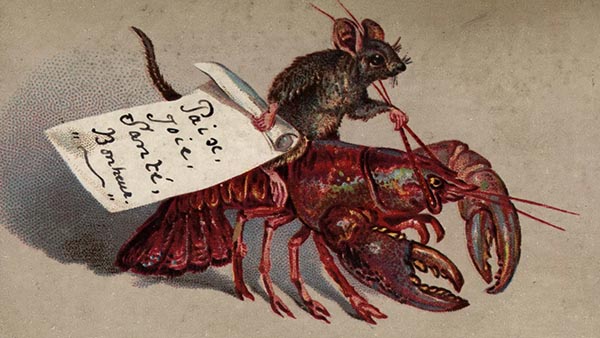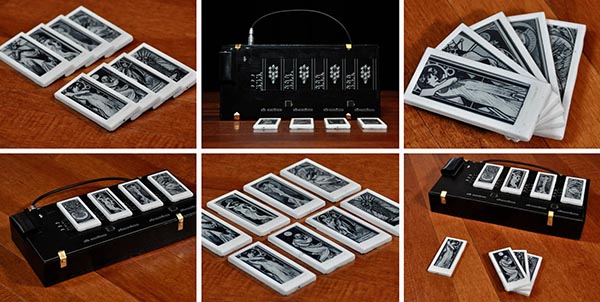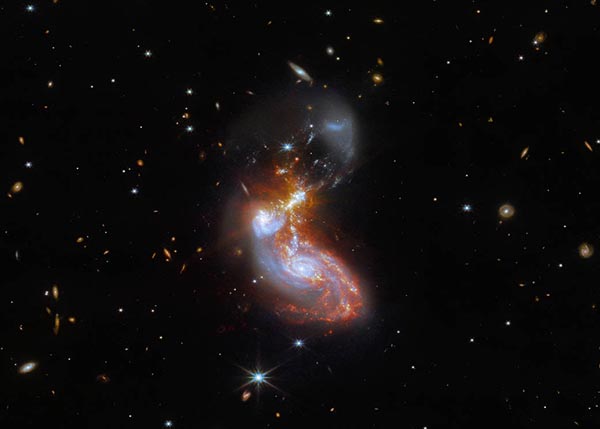Under the Gaslight
Fans of classic movies are no doubt familiar with the 1944 Charles Boyer/Ingrid Bergman film Gaslight (based on the 1938 play by Patrick Hamilton), in which Boyer tries to convince his wife (Bergman) that she is going insane. For example, his nefarious activities in the attic cause the house’s gas lights to flicker, and when she asks him about it, he insists that the flickering is all in her imagination. Hence the term “gaslighting.” (If the movie were made today, perhaps the term would be “LEDlighting”—and the psychological manipulation could last up to 20 times longer.)
Anyway, the term “gaslighting” to refer to such a deception entered modern parlance not long after the movie came out, and has, over the past decade or so, come into somewhat common usage, but apparently usage of the term skyrocketed in 2022, at least according to Merriam-Webster, who has named it the “word of the year.” Says Smithsonian:
Merriam-Webster saw a staggering 1,740 percent increase in searches for “gaslighting” in its online dictionary in 2022. Interest in the word was sustained throughout the entire year: Peter Sokolowski, Merriam-Webster’s editor at large, tells Leanne Italie of the Associated Press (AP) that the word stayed in Merriam-Webster’s top 50 list of most-searched words for all of 2022.
How is “gaslighting” used in news contexts?
People suffering from long Covid took up the term “medical gaslighting” to describe the medical establishment’s inappropriate dismissal of their symptoms. Congresswoman Carolyn B. Maloney declared in a September statement that “Big Oil is ‘gaslighting’ the public.” The word can also be used to describe individuals across contexts, from romantic partners to politicians.
Merriam-Webster defines the term in two ways:
psychological manipulation of a person usually over an extended period of time that causes the victim to question the validity of their own thoughts, perception of reality, or memories and typically leads to confusion, loss of confidence and self-esteem, uncertainty of one’s emotional or mental stability, and a dependency on the perpetrator.
And:
the act or practice of grossly misleading someone, especially for a personal advantage.
Here’s a fun game you can play. When someone tells you, “The word of the year this year is ‘gaslighting,’” repeatedly insist that it isn’t.
Oh, Da Cologne!
In previous editions of Around the Web, we have often linked to various perfumes and colognes that make the wearer smell like old books. Our Mount Monadnock Media Maven points to the latest entry in this product category, developed by someone who hates perfume in general (we sympathize). Specifically, CB I Hate Perfume has launched In the Library:
In the Library is a warm blend of English Novel*, Russian & Moroccan Leather Bindings, Worn Cloth and a hint of Wood Polish
*The main note in this scent was copied from one of my favorite novels originally published in 1927. I happened to find a signed first edition in pristine condition many years ago in London. I was more than a little excited because there were only ever a hundred of these in the first place. It had a marvelous warm woody slightly sweet smell and I set about immediately to bottle it.

Whenever I read, the start of the journey is always opening the book and breathing deeply. There are few things more wonderful than the smell of a much-loved book. Newly printed books certainly smell very different from older ones. Their ink is so crisp though the odor of their paper is so faint. Older books smell riper and often sweeter. Illustrated books have a very different odor from those with straight text and this smell often speaks of their quality.
We wonder if the Inkjet Insight folks have ever asked any of the production inkjet vendors if they intend to alter the odor of their inks to appeal to book smell connoisseurs. (We think we know the answer.)
Siri, Take a Letter…
Gizmodo asks, “What if smart assistants pre-dated Star Wars, smartphones, or even personal computers?” That is, what if Siri had existed in the 70s? (Actually, the best, most nostalgic memory of the 1970s is that it didn’t.) Anyway:
Although they’re far from perfect in their modern incarnation, Maker Cameron Coward’s latest video shows us what smart assistants could have been like in the ’70s, decades before voice recognition and even personal computers, when an electric typewriter would have been the only way to interact with them.
Coward started with a Texas Instruments Silent 700 Terminal, which could be used as a normal typewriter, while the “Terminal” aspect was a way to remotely connect to computers through a built-in modem and acoustic coupler. As a result, he was able to make the typewriter “smart,” being able to respond to commands, albeit through a telephone and modem rather than voice. The current iteration is his second go at it.
This time around, as Cameron has thoroughly documented on Instructables, a cheaper and more streamlined ESP32 was used, which communicates with Wolfram Alpha over wifi, but interfaces with the Silent 700 typewriter through its serial port (think of it as the USB port’s great-great-grandparent) instead of the acoustic coupler (which would send beeps and boops over a phone line). The new and improved version of this smart typewriter boots up in seconds and can answer questions without the need for special commands or phrasing, just like today’s modern smart assistants.
We’re suddenly a lot more appreciative of Siri now.
Are we? Are we really?
Christmas Carded
Christmas cards today are more often than not customized Shutterfly collages of family pics, a far cry from the generic bulk cards we used to pick up in Hallmark or wherever. Still, they usually still have Christmas-related imagery, like snowflakes, Christmas trees, ornaments, etc. But, if this were the 19th century, Christmas cards—be they generic or personalized—would have looked quite different. Mental Floss has a look back at the weird and often downright creepy genre of Victorian-era Christmas cards.
Prior to 1840, it was prohibitively expensive to mail something like a Christmas card, but the advent of the Penny Post in 1840, a new postal rule by which anything weighing under half an ounce could be mailed for a penny. As a result, the first commercial Christmas card was designed by John Calcott Horsley and sent by Henry Cole in 1843. It depicted a happy family sitting around a table, with the message “A Merry Christmas and a Happy New Year to you.” OK, pretty white bread, but, hey, it was novel at the time. This kicked off a whole Christmas card mailing boom, but after a while, people began tiring of the same-old same-old, and wanted new images. Weird images.
People sent and received ones that showed, among other odd pictures, the aftermath of one frog murdering another, a plate of dead birds, and humans emerging from the stomachs of creepy snowmen. Also featured were bizarre images of animals, fruits, and vegetables, such as sinister walking potatoes and Christmas dinner ingredients dancing to the music of a violin-playing rabbit.
… The dark nature of some of the images also reflects differences between Victorian values and those of today. The inclusion of images of dead robins is unsettling for us, but for people of that era, it was meant to signify a good luck ritual that was sometimes performed: To celebrate St. Stephen’s Day (the day after Christmas), people would kill a small bird, often either a robin or a wren. Sending those images of the deceased beasts was actually intended to bestow good fortune.

All this could make for some interesting new Shutterfly templates.
Wicked (Cool) Pack of Cards
Speaking of cards… Regular visitors to the Around the Web bunker know we are fans of the E Ink electrophoretic display technology whose first claim to fame was in the original generation of Kindle ebook readers. The technology has turned up here and there in other kinds of devices, but we came across an interesting prototype: E Ink-based playing cards.
Wyldcards are small plastic cards with e-ink screens (like a Kindle). When placed onto a plinth, the image on the card can be changed by a hidden computer. The cards also contain a memory chip, so they can store stats, moves, and keep changes and status effects from one game to the next. Plug your plinth into your friend’s and play against them.
Somehow we doubt that “plug your plinth into a friend’s” is going to be an effective slogan, but regardless, they do look pretty cool.

I think these cards have the potential to unlock a new paradigm of tabletop gaming. They are rooted in the physical world, but can implement complex game mechanics run by a computer.
… I haven’t designed a game for them yet! I’ve got some ideas, and I’m curious to explore the new interactions and game mechanics these unlock. If you know anyone out there who’d want to play around with these, try out ideas, give suggestions, or nerd out on game design, send me an email: [email protected]
Horsing Around
Kids love to draw, and it is the rare domestic refrigerator that isn’t festooned with children’s drawings of various people and things—very often animals. And, well, you have to admit—at least by the time they graduate college—the drawings aren’t really very good, charming though they may be, and don’t accurately portray, say, a horse. However, this is not to say that nature can’t be reverse engineered so that a child’s drawing of a horsie actually does resemble a horse—or, more accurately, a horse more closely resembles the drawing of it.
Via Boing Boing, one devoted father takes great pains to create photorealistic renderings of his child’s drawings.

Kind of Lathe of Heaven-y, but pretty amusing.
To the Moon, Graphene!
Was it a good week for graphene news? It’s always a good week for graphene news! Graphene is going to be tested on the Moon. A joint venture of the Mohammed bin Rashid Space Centre (MBRSC, United Arab Emirates) and the European Space Agency (ESA), the Rashid rover was slated to launch for the Moon on November 30, although the launch was postponed. When it does head Moonward, the wheels of the rover have been designed to test the repeated exposure of different materials to the lunar surface—including our old friend graphene. Says (who else?) Graphene-Info:
As part of this Material Adhesion and abrasion Detection experiment, graphene-based composites on the rover wheels will be used to understand if they can protect spacecraft against the harsh conditions on the Moon, and especially against regolith (also known as ‘lunar dust’). Regolith is made of extremely sharp, tiny and sticky grains and, since the Apollo missions, it has been one of the biggest challenges lunar missions have had to overcome. Regolith is responsible for mechanical and electrostatic damage to equipment, and is therefore also hazardous for astronauts. It clogs spacesuits’ joints, obscures visors, erodes spacesuits and protective layers, and is a potential health hazard.
…“New materials such as graphene have the potential to be game changers in space exploration. In combination with the resources available on the Moon, advanced materials will enable radiation protection, electronics shielding and mechanical resistance to the harshness of the Moon’s environment. The Rashid rover will be the first opportunity to gather data on the behavior of graphene composites within a lunar environment,” says Carlo Iorio, Graphene Flagship Space Champion, from ULB.
But that’s not all. Special graphene-based inks have also been tested on a previously-launched rocket.
This experiment will provide new information about the printing of GMR inks in weightless conditions, contributing to the development of new additive manufacturing procedures in space such as 3D printing. Such procedures are key for space exploration, during which replacement components are often needed, and could be manufactured from functional inks.
Just a Paw in Their Game
Do you have a dog? Has he or she become bored with fetch and wants a new game, one that will more strenuously test his or her eye-paw coordination? Well, make reservations—and we have plenty—for Joipaw, a video game system that will “unleash your dog’s cognitive potential.” (Uh oh: Scanner dog!) Says Axios:
The Joipaw console will include “a dog-tailored touchscreen, a height-adjustable stand and an automated treat dispenser,” plus “running interactive puzzle games that are constantly new and challenging.”

Photo by Dersim Avdar (Kawet’s human, Kawet being the dog), via Axios
How does it work?
“Dogs wear the tracker on their collar, and it sends data on their activities to the app, e.g. steps, time spent resting, playing, walking,” Avdar tells Axios.
“They also play games on the console and receive treats when they’re successful,” he says. “We gather cognitive data in the background, which is also shown in the app.”
Avdar hopes to build Joipaw into “Apple Health, but for dogs.”
Uh huh.
Call the Next Defend-Ant
There is no doubt that animals—insects in particular—can cause a lot of damage to homes and other buildings, not to mention crops. Usually, the best we can do is call an exterminator, then fix the damage, usually at our own expense. However, if this were Medieval France, we could sue the offending pests.
Via Ancient Origins, in 1906, Edmund P. Evans published a book called The Criminal Prosecution and Capital Punishment of Animals, all about animal trials. We kid you not; Evans includes 200 or so stories of donkeys, pigs, and roosters—often dressed as humans—being hauled into court. Even weevils were not immune from the long arm of the law.
While cases against identifiable larger animals were usually tried in secular courts, cases against smaller creatures, such as weevils, rats or locusts, were the purview of the church. All of these cases followed usual court proceedings, with evidence being presented on both sides, witnesses testifying and verdicts being reached. In the case of the weevils, the offending vermin was appointed a lawyer to act in their defense.
OK, this needs to be made into a TV show.
The bizarre trial of weevils took place in the 16th century in southeastern France. The weevils in question were Rhynchites auratus , known as merciless orchard pests. The proceedings kicked off in 1545 after winemakers accused weevils of destroying the vineyards of St. Julien.
Alas, the courts were not always inclined to favor the plaintiffs.
The chair of the ecclesiastical court, a Francois Bonnivard, refused to punish the unwitting creatures [the weevils] and recommended the winemakers avoid divine wrath by repenting for their sins, attending three special masses and, of course, paying overdue tithes to the church, after which, the weevils seemingly left them in peace.
There is no word if there was an animal appellate court.
Around the Webb, Part the Continuation: Collision Course!
The James Webb Space Telescope is up and running and recently turned its gaze toward II ZW 96, a pair of galaxies in the process of colliding—or as NASA describes it, “cavorting” (a term to use on your next car accident report, perhaps). II ZW 96 is about 500 million light-years from Earth in the constellation Delphinus, and its two constituent galaxies are in the process of merging. Says NASA:
The bright cores of the two galaxies are connected by bright tendrils of star-forming regions, and the spiral arms of the lower galaxy have been twisted out of shape by the gravitational perturbation of the galaxy merger. It is these star-forming regions that made II ZW 96 such a tempting target for Webb; the galaxy pair is particularly bright at infrared wavelengths thanks to the presence of the star formation.

The things we can do.
Deerstalker
Think of it as the dark side of public domain. This year, the 1923 novel Bambi, a Life in the Woods by Felix Salten, on which the Disney film was based—entered the public domain, which means that filmmakers (or others) are free to adapt it as they will without fear of litigation. So, via Entertainment Weekly, the live-action film Bambi: The Reckoning is currently in production.
“The film will be an incredibly dark retelling of the 1928 story we all know and love,” Jeffrey told the outlet. “Finding inspiration from the design used in Netflix’s The Ritual, Bambi will be a vicious killing machine that lurks in the wilderness. Prepare for Bambi on rabies!”
Awesome; just what the world needs.
This is nothing new—a producer on the film, Rhys Frake-Waterfield, was also behind Winnie-the-Pooh: Blood and Honey, also the result of the public-domaining of A.A. Milne’s novel. We’ll stick to the Disney versions, thanks.
Dinner for Onesie
Do you like Olive Garden? Pajamas? If yes to both, good news! Via Food & Wine, Olive Garden—like other food, beverage, and restaurant brands—is releasing tie-in merch, in this case, a matching family set of pajamas to help everyone share the love of breadsticks.
The onesie pajamas — which will be available at olivegarden.com starting on December 6 at 10 a.m. ET — are described by Olive Garden as both cozy and hooded, and are covered in a print showing of “the brand’s most iconic offerings” which includes everything from pasta to after-dinner mints, and, of course, plenty of soup, salad and breadsticks.
They'll be sold in “a wide range of sizes for the whole family” — with adult PJs going for $35 while the kids sizes will be sold for $25 (plus shipping). But Olive Garden also implies they won’t be around for long. The site emphasizes, “Quantities are limited and available on a first come, first serve basis. Available only while supplies last.”

No word on whether therapy is included in the price of the PJs or is an additional medical cost.
This Week in Printing, Publishing, and Media History
November 21
1676: The Danish astronomer Ole Rømer presents the first quantitative measurements of the speed of light.
1694: French historian, playwright, and philosopher Voltaire (né François-Marie Arouet) born.
1783: In Paris, Jean-François Pilâtre de Rozier and François Laurent d’Arlandes, make the first untethered hot air balloon flight.
1877: Thomas Edison announces his invention of the phonograph, a machine that can record and play sound.
1898: Belgian painter René Magritte born.
1902: Polish-American novelist and short story writer, Nobel Prize laureate Isaac Bashevis Singer born.
1905: Albert Einstein’s paper that leads to the mass–energy equivalence formula, E = mc², is published in the journal Annalen der Physik.
1945: American humorist, newspaper columnist, and actor Robert Benchley dies (b. 1889).
1969: The first permanent ARPANET link is established between UCLA and SRI.
November 22
1819: English novelist and poet George Eliot (née Mary Ann Evans) born.
1869: French novelist, essayist, and dramatist, Nobel Prize laureate André Gide born.
1928: The premier performance of Ravel’s Boléro takes place in Paris.
1935: The China Clipper inaugurates the first commercial transpacific air service, connecting Alameda, California with Manila.
1963: English novelist and philosopher Aldous Huxley dies (b. 1894).
1977: British Airways inaugurates a regular London to New York City supersonic Concorde service.
1995: Toy Story is released as the first feature-length film created completely using computer-generated imagery.
November 23
534 BC: Thespis of Icaria becomes the first recorded actor to portray a character onstage.
1644: John Milton publishes Areopagitica, a pamphlet decrying censorship.
1888: American comedian and musician Harpo Marx (né Adolph Marx) born.
1889: The first jukebox goes into operation at the Palais Royale Saloon in San Francisco.
1924: Edwin Hubble’s discovery, that the Andromeda “nebula” is actually another island galaxy far outside of our own Milky Way, is first published in The New York Times.
1936: Life magazine is reborn as a photo magazine and enjoys instant success.
1963: The BBC broadcasts the first episode of An Unearthly Child (starring William Hartnell), the first story from the first series of Doctor Who, which is now the world’s longest running science fiction drama.
November 24
1713: Irish novelist and clergyman Laurence Sterne born.
1859: Charles Darwin publishes On the Origin of Species.
1877: Anna Sewell’s animal welfare novel Black Beauty is published.
1962: The influential British satirical television program That Was the Week That Was is first broadcast.
November 25
1915: Albert Einstein presents the field equations of general relativity to the Prussian Academy of Sciences.
1952: Agatha Christie’s murder-mystery play The Mousetrap opens at the Ambassadors Theatre in London. It will become the longest continuously-running play in history.
1968: American novelist, critic, and essayist Upton Sinclair dies (b. 1878).
1974: English singer-songwriter and guitarist Nick Drake dies (b. 1948).
November 26
1789: A national Thanksgiving Day is observed in the United States as proclaimed by President George Washington at the request of Congress.
1863: United States President Abraham Lincoln proclaims November 26 as a national Thanksgiving Day, to be celebrated annually on the final Thursday of November.
1912: American journalist Eric Sevareid born.
1917: The Manchester Guardian publishes the 1916 secret Sykes-Picot Agreement between the United Kingdom and France.
1919: American author and publisher Frederik Pohl born.
2003: The Concorde makes its final flight.
November 27
8 BC: Roman soldier and poet Horace dies (b. 65 BC).
1809: The Berners Street hoax was perpetrated by Theodore Hook in the City of Westminster, London.
1839: In Boston, Massachusetts, the American Statistical Association is founded, against all odds.
1852: English mathematician and computer scientist Ada Lovelace dies (b. 1815).
1924: In New York City, the first Macy’s Thanksgiving Day Parade is held.
1942: Guitarist Jimi Hendrix born.
November 28
1628: English preacher, theologian, and author (Pilgrim’s Progress) John Bunyan born.
1814: The Times of London becomes the first newspaper to be produced on a steam-powered printing press, built by the German team of Koenig & Bauer.
1859: American short story writer, essayist, biographer, historian Washington Irving dies (b. 1783).
November 29
1832: American novelist and poet Louisa May Alcott born.
1877: Thomas Edison demonstrates his phonograph for the first time.
1972: Atari releases Pong, the first commercially successful video game.
2001: English singer-songwriter, guitarist, and music producer George Harrison dies (b. 1943).
November 30
1667: Irish satirist and essayist Jonathan Swift born.
1835: American novelist, humorist, and critic Mark Twain (né Samuel Clemens) born.
1900: “Either that wallpaper goes or I do”: Irish playwright, novelist, and poet Oscar Wilde dies (b. 1854).
1947: American playwright, screenwriter, and director David Mamet born.
1979: Pink Floyd’s The Wall is released.
1982: Michael Jackson’s Thriller is released. It will become the best-selling record album in history.
December 1
1913: Ford Motor Company introduces the first moving assembly line.
December 2
1939: New York City’s LaGuardia Airport opens. Has not been upgraded since.
1971: The Soviet space program’s Mars 3 orbiter releases a descent module. It lands successfully but loses contact. It is the first man-made object to land softly on the surface of Mars.
December 3
1857: Polish-born British novelist Joseph Conrad (né Józef Teodor Konrad Korzeniowski) born.
1894: Scottish novelist, poet, and essayist Robert Louis Stevenson dies (b. 1850).
1910: Modern neon lighting is first demonstrated by Georges Claude at the Paris Motor Show.
1994: The PlayStation developed and marketed by Sony Computer Entertainment is released in Japan.
December 4
1732: English poet and playwright John Gay dies (b. 1685).
1791: The first edition of The Observer, the world’s first Sunday newspaper, is published in the U.K.
1875: Austrian-Swiss poet and author Rainer Maria Rilke born.
1881: The first edition of the Los Angeles Times is published.
1965: The Grateful Dead makes its first concert performance under that name (they had been founded as The Warlocks).
1993: American singer-songwriter, guitarist, and producer Frank Zappa dies (b. 1940).














